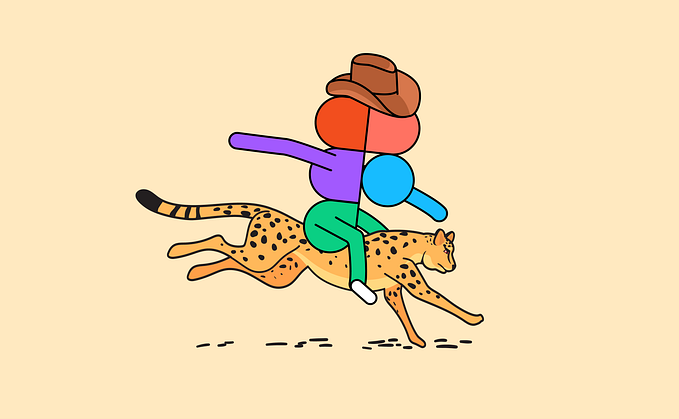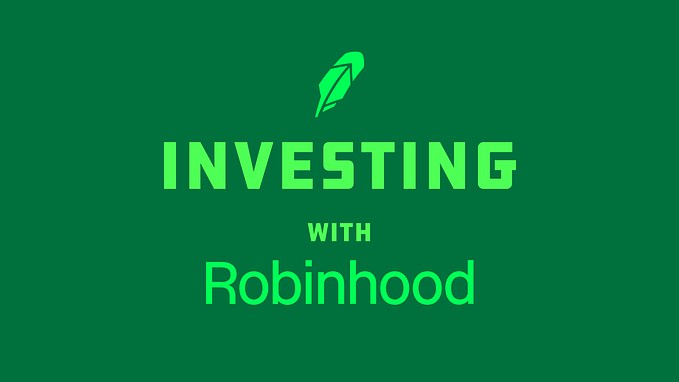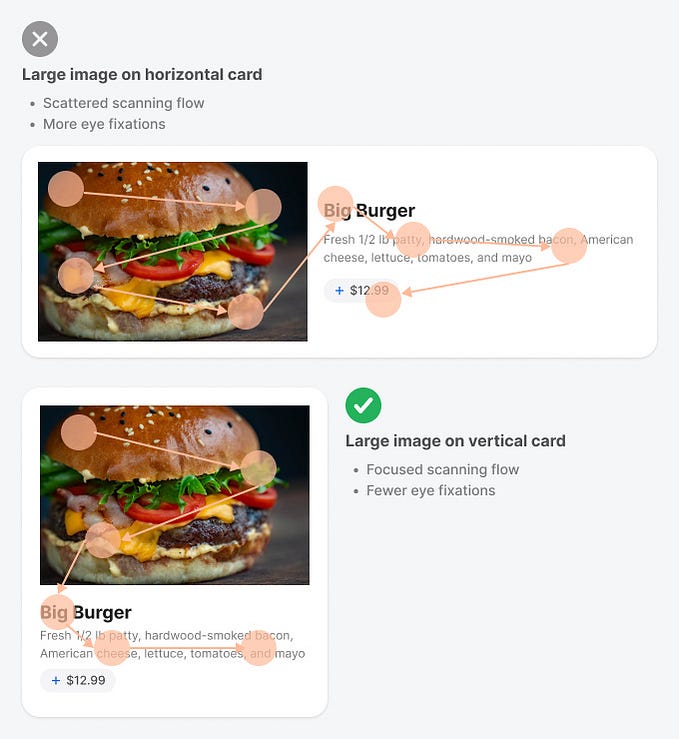How to conduct UX user interviews
A beginner’s guide that will be there to hold your sweaty hand throughout the process.

Your palms are sweaty, knees weak, arms are heavy
Your interview Q’s aren’t ready, mom’s spaghetti
Sound familiar? Good. You should’ve probably heard an Eminem song by this point in your life. However as much as I’d love to dive deep into his life and discography, Medium has only given me this one shot, one opportunity to tell you a thing or two about user interviews. So let’s begin.
We’ll begin by painting a picture that may seem all too familiar. It’s a bright Tuesday morning, the birds are chirping, and you wake up to the sudden realization that you signed yourself up to conduct user interviews for your product design. You remember being decent at public speaking in middle school, but your experience beyond that is pretty sparse — given that singing Don’t Stop Believing at your local karaoke bar can’t really be put on a resume. So you panic. Where do I even find people to interview? How many interview questions should I ask? What kinds of questions do I ask? How to I become the next Oprah of UX design?
If any of these questions sound familiar, you’ve come to the right place. Given that I was asking myself the same things 2 weeks ago, and have since then conducted several interviews — I consider myself somewhat of a veteran, and can lend a helping hand.
Conducting user research is important in many ways, as it challenges the pain points of the users from many angles. That being said, there are a few forms of user research, of which we will only be focusing on one. Specifically, uSeR iNtErViEws.
User interviews are especially useful at the beginning of a project because they give you the opportunity to directly interact with the people who may/will use your product. Understanding their perspectives prior to any prototyping will help you focus on the real-life problems that they are experiencing.
As designers, we approach projects with a biased opinion. What I mean by this is that we are immersed in the problem and have perhaps begun coming up with our own solutions. We tend to view our issues from a design perspective. However, the average user of a product may not approach their problem from the same point of view, hence we come to the users for guidance. We go to them to learn something new, and find a way to solve their problems from the collective perspectives of the interviewees. Gathering data from a target audience that is relevant to your project is therefore crucial in order to get accurate, unbiased information that will point you in the right direction.
Great! I’d love to learn something new from the user. Who should I interview?
Picking a target audience is crucial to the interview process. Your end product is only going to be as good as your interviews — so choose your victims wisely.
In my case, I was looking for people who had experience with Netflix in combination with Netflix party, or some version of a 3rd party extension that focused on communication while people watched movies. As this was my very first interview process, I turned to my friend group to scope out potential users. I came up with a list of people who I know use Netflix religiously and consistently use up all of our monthly data because of it.
Here are some things I considered:
1. Age group
• Focus on the age group that uses this product. Mine was 20–30 because those are the primary users of Netflix
2. Geographic location
• I chose people who were relatively in the same geographic location to make the interview process easier
3. Lifestyles
• As we are currently living through a global pandemic, my focus was on people who would potentially supplement their deteriorating social lives with endless video streaming and mid-night crying sessions into tubs of peanut butter
4. Behaviours
• Given that I wanted to focus on the communication that occurs during movie watching, I focused my questions to further explore their behaviours in regards to communicating
Of course, it’s not always this easy to find your target audience. Apart from looking into your immediate friend group, you could also post about it on your social media such as on instagram, twitter, facebook, or use usertesting.com where you can connect with people online and conduct research there.
My list is by no means exhaustive, but it was definitely a good starting point. If you’d like to further educate yourself on choosing the right target audience, you can read more about it here.
But how many people should I interview?
Although there is no established magic number, it is often recommended to interview just 5 people. The idea of interviewing 5 people came from Jakob Nielsen, Ph.D., User Advocate and principal of the Nielsen Norman Group, and you can read his full article here.
This number might seem low, but you may find that by the time you’ve interviewed the 5th person, you are no longer unveiling new information. If you find that this is true for you, then there is no need to continue your investigation. If, however, you’re finding that the data you have collected between the 5 users varies greatly, then it is either an issue with the types of questions you have asked, or, the target audience simply has vastly different experiences. At that point, revise your questions and continue interviewing.
Take away points:
- Interviews allow us to see the real pain points of users
- Your interviewee is there to teach you something new
- Choose a relevant target audience
- Start by interviewing 5 people
Define Your Hypothesis
At the heart of every strong interview lies a strong hypothesis.
As a researcher, you want to be insightful during your interview and really understand your users. You want to know more about their goals, and their experiences. That’s great. But what specifically are you trying to find out? And more importantly, why? And, how do you even answer that question?
Having a hypothesis before even beginning your long list of questions is important because you want to create every question with it in mind. Your end goal is to either prove or disprove your hypothesis, and the interview will provide you with the supporting data you need. Therefore addressing every question in a way that highlights your hypothesis in one way or another, allows for your questions to be more relevant and concise.
So start off by asking yourself this question:
What do I think I know about the user?
In my case, I was working on a project to incorporate a chat/video chat option into Netflix.com itself, without having to rely on Netflix Party. This is how I outlined my hypothesis:
What I think I know about the user is that they would want a built-in chat option on netflix.com, rather than relying on Netflix Party.
Asking yourself this question helps solidify what your end goal is with your user research. Because, chances are, that apart from desperately wanting human connection via interview after COVID-19, you also probably want to acquire an in-depth understanding of the perceptions and experiences of the users in your target audience.
Take away points:
- Define your hypothesis by asking yourself what you think you know about the user
- Design every question with your hypothesis in mind, whereby every question will help to either prove or disprove your hypothesis
Define your objectives
To support your hypothesis, you’ll need to outline your objectives. As previously mentioned, you don’t know everything about the user or how they interact with the product. What you do know, however, is that you’re missing some information. Define what it is exactly that you’re missing. Ask yourself:
What are the knowledge gaps I need to fill?
Verbalizing the gaps in your understanding of the user drives you to a distinct set of objectives. It becomes like a to-do list of things you have to figure out, and in turn, will help you understand what the user goals and problems are.
With the Netflix project, I didn’t know what the pain points of my users were when they interacted with Netflix Party. I also didn’t know if they were consistent users of the app or not, and consequently, why that was the case. So I set those as my objectives — things I needed to get answers to.
Takeaway points
- Verbalize what knowledge gaps you need to fill
- Use knowledge gaps as project objectives. eg. What problems do you need to find the answers to?
Types of questions that are good to have:
Your goal is to understand user behaviour through a series of questions. In my experience, the amount of questions you ask ranges from 15–40. That being said, even if you have 40 questions written down, you may only end up asking 15 of them. Users will be giving you different answers and describing varying interactions with the product, so you might find yourself wanting to dig deeper into some scenarios over others. This often requires you to improvise questions on the spot to further understand their experiences, so keep that in mind when you’re forced to do mental acrobatics on the spot.
Ask direct questions that require descriptive answers. This goes both for general questions, and product-specific questions. Of course, you’ll find that there are some yes/no questions that you need to ask, but the priority should be placed on questions where the user needs to elaborate on their answer. For example:
General Questions:
- Can you describe your experience with X?
- Can you tell me more about your habits?
- What are some apps you use a lot?
- What is a day in the life like for you?
- What’s your relationship with technology?
Product Specific Questions
1. If you were going to unsubscribe from this product, what would be the number 1 reason why?
2. What was the hardest thing about X?
3. Did you come up with a solution to your problem?
4. If you were a wizard, Harry, what would you change about the product?
5. What is your favourite feature of X?
In addition to these types of questions, you’ll want to spend some time asking product specific questions that require the user to recall exceptional and annoying experiences with the product. For example:
1. Can you recall a particularly annoying experience with X?
2. Can you recall an exceptional experience with X?
So rather than speaking about the product in general terms, you are asking them to recall specific situations where they can describe their actions and feelings with honesty. You want them to be as brutally honest as possible here, especially when they’re describing their problems.
This brings me to my next point:
Ask the same question in a few different ways. Some of my questions — especially from the product specific category, sounded pretty similar to the experience-specific questions. This is a good way to observe the same problem from a few angles. It gives the interviewee an opportunity to describe their experience in full detail, painting you a better picture of their experience.
Next up is:
ASK FOLLOW UP QUESTIONS. Be the child who just learned the word “why” and just keeps asking it.
“Oh this happened when I tried to do this so I did XYZ”
WHY?
“Oh and then I did this”
WHY?
“So then I just …”
but WHY?
Annoying? Possibly. But does it get to where you need to go? Absolutely. You can’t expect your interviewee to just hand you the answers on a silver platter. You gotta work for them, and that’s why follow up questions are so important. They allow you to see the motive behind their actions, the emotions they were experiencing when interacting with the product, why they would choose to do something over another thing, and so on.
When I was conducting my interviews, some users touched up on the fact that incorporating a text and video chat option within Netflix would make socializing easier for them. This wasn’t on my original list of questions, but when 3 of the 5 people I interviewed mentioned something about it, it gave me the opportunity to ask them a few more questions about it. Such as, why they thought that would be, and what their social life was currently looking like, and why this would be preferable over other forms of communication. All the answers basically came down to the fact that over lockdown, they all became more isolated from one another, and essentially wanted to feel connected when they were apart from others. Conversations like these lead you to making further discoveries about the product that you’re working on.
Takeaway Points:
- Ask direct questions that require descriptive answers
- Ask questions that make the user elaborate on a specific interactions
- Ask the same question in a few different ways
- Ask follow up questions — e.g. Why did this happen, Why did you feel that way.
Let’s get down to business…to defeat the user(’s pain points)
You’ve got your hypothesis. You’ve defined your objectives. You’ve even picked a target audience that you will interview. Now it’s time for me to make a UX researcher out of you.
A good approach to conducting interviews is to perceive yourself as a psychologist, speaking to their patient as they lay on your couch, telling you of the (dark) inner workings of their mind. Interviews are similar in that respect because you’re assessing their behaviour, their answers, and their attitude in order to find a solution. There’s no judgement. Just a lot of Freudian psychoanalysis.
The interviewee may be just as nervous as you are going into this interview, so give a brief description of the purpose of the interview, and what it is you want to achieve. This way, they will have an idea of the kinds of questions they can expect from you.
Following this, you can begin the interview, and ask the user a few general questions. Get to know them, see what they’re like outside of using the product. For instance:
Where do you work?
Can you tell me about your habits?
After starting off with 3–5 questions like that, you can begin to introduce more product specific questions, such as:
Can you tell me about the last time …
How did you work around…
At this point in time, you can start asking those follow up questions, and continue asking them why they did a certain thing.
When the interview comes to an end, you can guide the conversation to a wrap-up summary. If you’re not going to be using the same crowd for your user-testing, you can potentially share more details with them about the product if you so choose. Shake their hand from 6ft apart and thank them for their time. They’ve spent a decent amount of time helping you out, and they should feel appreciated afterwards.
Pro tip: Monetary rewards or coffees are always welcome. Unless you’re interviewing your roommates who used up all the data for Netflix. Then just give them a high five or something.
Takeaway points:
- Be the psychologist you couldn’t afford in university …but for like…user research
- Give the interviewee a brief description of what you’re trying to achieve with the interview
- Ease them into the conversation to make them feel more comfortable
- Provide a wrap up summary of the interview
- Thank them for their time
Things to keep in mind during the interview
When conducting my interviews, I was alone and therefore had to take my own notes on my laptop. I didn’t end up recording my interviews, but I do think there is value to it, in the sense that it’s pretty easy to refer back to it if there is missing pieces of information — which I ended up having when I realized I didn’t ask one particular question which I wish I did.
This meant that I ended up writing my notes down as I interviewed them, so there were times when it was just me typing, and not asking any further questions. I purposely did not try to fill the silence, because I wanted to see if my interviewee would. During these moments of quiet, see if the user adds anything. Sometimes people want to fill the silence, and might add information they omitted before. I find that “awkward” silences can make people talk more, kind of like Donkey from Shrek, whom I definitely relate to a lot. Your users might too.
Thank you so much for reading this article! I hope this helps! And if there is anything you disagree with here, what is it, and why?
Sign up for my newsletter:









